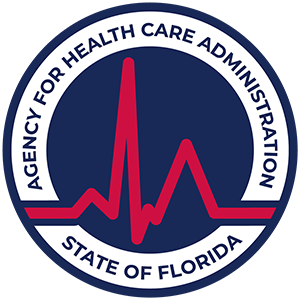How to Access a Life-Saving Narcan Dispenser Kit
Learn how to get a free Narcan kit at Lotus Behavioral Health and how to use it correctly. Be prepared to save a life in case of an opioid misuse emergency
According to the CDC, Narcan (naloxone) has saved over 25,000 lives based on kits given to community members to reverse opioid overdoses. Studies show that Narcan is effective 90% of the time when used correctly [1].
Narcan is safe to administer to teens, even if you aren't sure if their overdose is caused by opioids. It is widely available, and many addiction treatment programs for teens, such as Lotus Behavioral Health, provide life-saving Narcan dispenser kits to reduce the rates of drug overdoses in the community.
What is Narcan?
Narcan (naloxone) is a life-saving medication used to reverse overdoses quickly. It works on drugs such as fentanyl, heroin, morphine, oxycodone, and other opioids. Its safe formula and ease of use make it possible for medical professionals, emergency service personnel, and the general public to use it in times of emergency. It can be safely administered to both adults and children, and can be administered as a precaution even if no opioids are present.
Narcan is FDA-approved to treat acute overdoses and extend the time for emergency services to arrive. It has played a role in saving countless lives and decreasing the mortality rates of the opioid epidemic. Narcan is available in all 50 states without a prescription and does not lead to dependence or addiction [2].
Narcan's Role in Preventing Overdose
Narcan is an opioid antagonist and prevents overdoses by quickly binding to opioid receptors and blocking the effects of opioids. It displaces opioid drugs from the mu-opioid receptors in the brain and central nervous system to restore regular breathing in someone who has overdosed. It is stronger than most opioids, binding tightly to receptors but without activating them.
What Comes in A Narcan Dispenser Kit?
Narcan dispenser kits are growing as a prevention method, often given out by local health centers, hospitals, drug treatment programs, and needle exchange programs. A typical Narcan dispenser kit includes:
- 2 doses of Narcan
- Step-by-step pamphlet with instructions
- Pair of non-latex gloves
- Some harm reduction programs may also provide clean needles, or testing strips to test for the presence of fentanyl
Recognizing Signs of A Teen Overdose
Before using Narcan, it’s important to recognize the symptoms of an overdose in teens. As soon as you spot the signs, administer Narcan and call 911.
- Slow, shallow, or stopped breathing
- Blue or purple lips or fingernails
- Constricted or pinpoint pupils
- Loss of consciousness or lack of responsiveness
- Heavy limbs, lack of coordination
- Decreased heart rate, low blood pressure
- Vomiting, choking, or gurgling sounds
Narcan 101
To ensure Narcan works and is successful in the midst of a crisis, it’s important to use Narcan effectively. This means knowing when to use it, where to access it, how to store it properly, and tips for safe administration [2].
When to Use Narcan?
Narcan is safe to use on both adults and children for opioid overdoses (including accidental overdoses). Even if no opioids are present in the body, Narcan can still be administered for precaution. Use Narcan if you notice your teen is:
- Unresponsive or cannot be woken up even after shaking and shouting
- Shallow breathing, or breathing has stopped entirely
- You suspect an opioid overdose based on context (finding needles, dime bags, crushed pills)
Where to Access Narcan?
Narcan is available over the counter, without a prescription, in all 50 states. There are several places to access Narcan. Some common resources that provide Narcan include:
- Pharmacies: Major pharmacies, including Walgreens, CVS, and Rite Aid, offer Narcan as an over-the-counter nasal spray requiring no prescription.
- Community Health Center: Health centers and drug treatment programs often offer free naloxone as part of their overdose prevention service.
- Needle and syringe exchange: Harm reduction programs distribute naloxone kits to people at risk of overdose.
- Hospitals: Emergency medical settings and health clinics may provide naloxone for patients who are discharged after an overdose.
Narcan Shelf Life and Storage
The typical shelf life for Narcan is 4 years if stored correctly. Store Narcan at room temperature (50°F to 77°F), away from light and harsh weather conditions. The effectiveness of Narcan can be reduced if exposed to extreme temperatures or sunlight. Although not guaranteed, expired Narcan can still be effective and should be used as a last resort when no other options are available.
Narcan Interactions and Safety Considerations
Narcan has little effect on teens without opioids in their system and is safe to use even if other drugs or alcohol are present. It is not possible to overdose on Narcan because, although it binds to opioid receptors, it does not activate them. It can cause acute withdrawal symptoms (nausea, vomiting, confusion, muscle pain) in individuals with opioid use disorder due to sudden displacement.
Although Narcan is safe and highly effective, it is not a long-term treatment. Narcan typically lasts for 30 to 90 minutes, buying time so emergency medical services can arrive. It’s important to continue monitoring your teen and wait for emergency medical attention to arrive.
How to Safely Administer Narcan
Narcan can be administered in a few different ways, but intranasal (nasal spray) is what is provided in pharmacies and most commonly used among non-medical personnel. To safely administer Narcan in the case of an overdose, follow the instructions below:
- Take Narcan out of the box and peel back the cap with the circle to open the Narcan® Nasal Spray.
- DO NOT remove Narcan until ready to use, and DO NOT test the device.
- Hold the Narcan® Nasal Spray with your thumb positioned on the bottom of the plunger, and your first and middle fingers placed on either side of the nozzle.
- Tilt the person's head back and support their neck with your hands. Gently insert the tip of the nozzle into one nostril and press the plunger firmly to give the dose of Narcan.
- If the person does not respond after 2 to 3 minutes, administer the second dose to the other nostril.
- Watch the person closely, monitoring their breathing and level of consciousness. Call 911 if you haven’t already and wait for emergency services to arrive.
Here is a step-by-step guide with pictures.
Community Drug Prevention at Lotus Behavioral Health
Lotus Behavioral Health is a residential treatment facility for teens located in Florida. Our programs are designed to support teens and their families with the tools they need to recover from substance abuse and co-occurring mental health disorders.
We are also committed to educating the local Winter Springs community on the opioid crisis and supporting efforts to prevent drug overdoses in teens. Our programs provide parents with the resources, education, and tools to safely store and administer Narcan in the case of an emergency.

Sources
[1] Galinkin, J. L. (2018). Naloxone dosage for opioid reversal: current evidence and clinical implications. Therapeutic advances in drug safety, 9(1), 63–88.
[2] National Institute on Drug Abuse. Naloxone Drug Facts. 2022.
[3] New York State Department of Health. How to Use Narcan Nasal Spray for an Opioid Overdose.














.svg)








